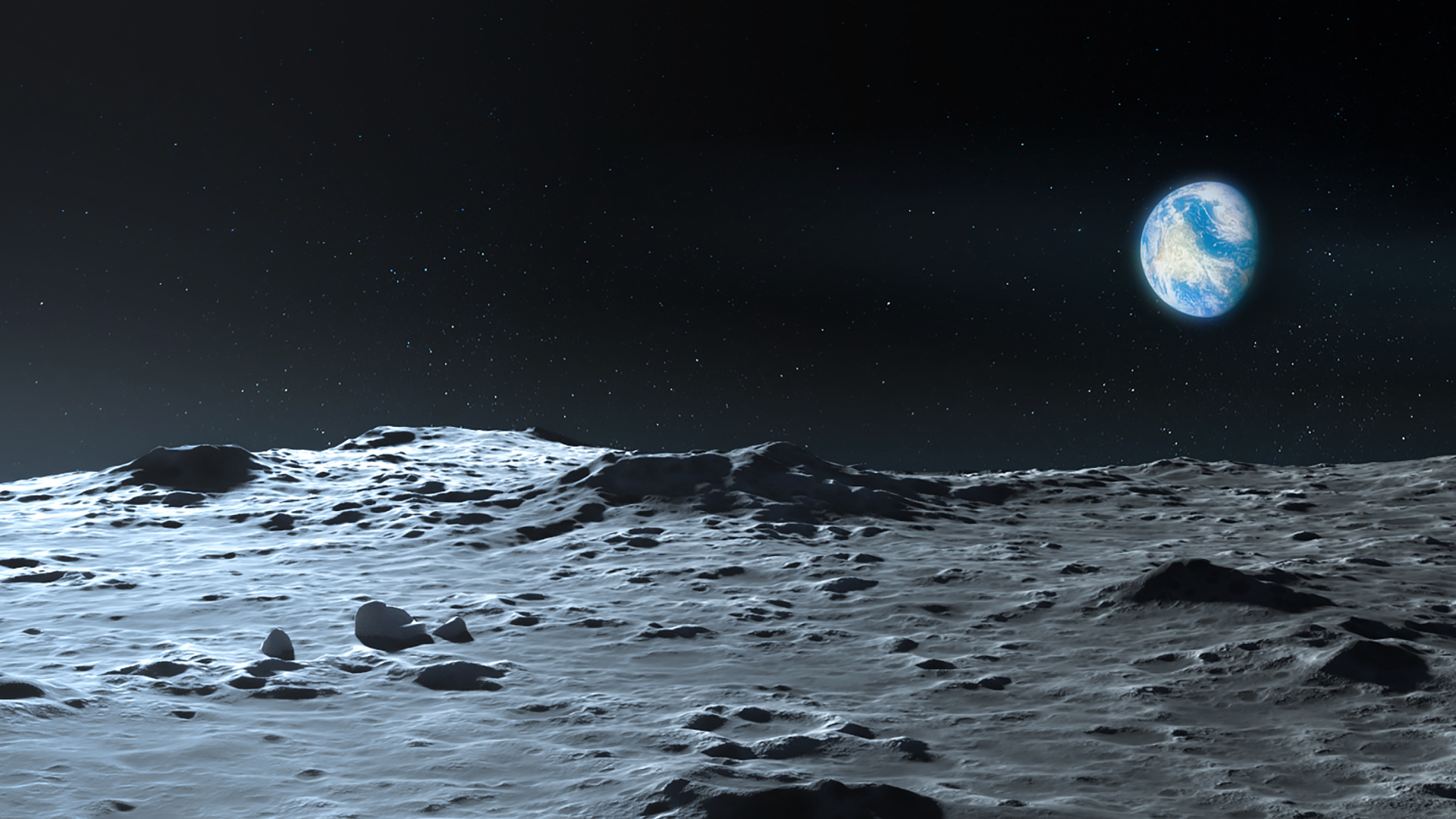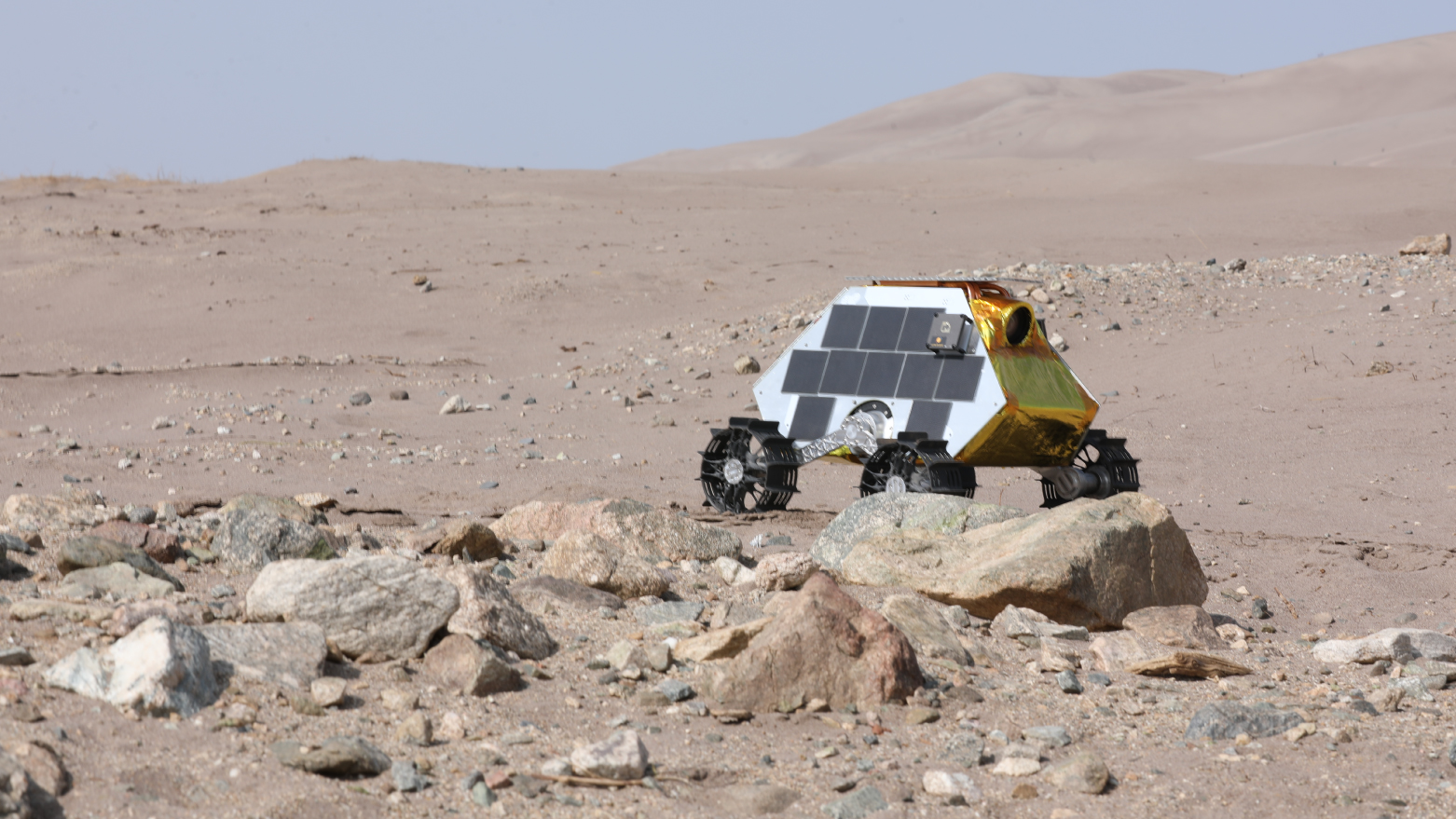
One small step for a rover
Get to know the Lunar Outpost MAPP rover that is helping create the first human settlement on the Moon.
Get to know the Lunar Outpost MAPP rover that is helping create the first human settlement on the Moon.

There’s a high probability that the Moon could contain large reserves of rare Earth materials. Photo source: Shutterstock
Fast forward two decades: Cyrus co-founded Lunar Outpost, a technology company dedicated to enabling extended human settlement on the Moon. In December 2020, NASA awarded Lunar Outpost the first-ever contract for the collection and commercialization of materials on the lunar surface. This is important for many reasons. The ability to mine and use extraterrestrial resources will be critical to the success of NASA’s Artemis mission that seeks to explore more of the lunar surface than ever before. Learnings from the mission will also be used to inform the development of the first human mission to Mars.
Lunar Outpost, in collaboration with Nokia and Intuitive Machines, will help build, test, and integrate the first LTE/4G network on the lunar surface. A Nova-C lander developed by Intuitive Machines will carry the communications system to the lunar South Pole. It will also carry the Lunar Outpost M1 Mobile Autonomous Prospecting Platform (MAPP) rover. The rover will then traverse the lunar surface in an extremely demanding environment. As it makes its journey, the rover will enable Nokia technology to collect performance data on its LTE/4G system.

MAPP rover is designed to function in extreme environments. Photo source: Lunar Outpost
The demanding lunar environment
Since its founding in 2017, Lunar Outpost’s mission is to design robotics systems for extreme environments. Earth is home to a dizzying range of extremes. For example, temperatures in Death Valley have gone as high as 134°C, while the Vostok Station in the Antarctic has recorded a temperature of minus 89.6°C.
However, these environments pale in comparison to the harsh conditions the MAPP rover will encounter on the Moon.
Temperatures on the lunar surface can range from minus 173°C to as high as 127°C. And because the tilt of the Moon’s axis is about 1/20th of that of Earth, there are areas on the lunar poles that never see daylight.
The lunar terrain also poses challenges for the Lunar Outpost MAPP rover. The Moon doesn’t have any atmosphere. While most objects heading toward Earth burn up on entry, they face no such impediment on the Moon. As a result, the surface of the Moon is dotted with millions of impact craters.
“We’ve made a break from the past to address these unique challenges while designing the MAPP rover,” says Cyrus.
At 10 kilograms, the MAPP rover is considerably lighter than vehicles that have been deployed on the Moon and Mars in the past—for context, the Mars Perseverance rover weighed 1,025 kilograms.
Cyrus points to the ability of the MAPP rover to collect a wide variety of data points related to radiation, temperature, and solar radiance. Crucially, MAPP can also collect localization data at a very precise level.
“The ability to pinpoint the exact location of the rover at any given moment is critical to validating Nokia’s 4G/LTE technology,” says Cyrus. “The MAPP rover will allow Nokia to get an accurate measurement of the signal at different locations.”
Engineers at Lunar Outpost have developed innovative ways to combat the wide range of temperatures the rover will encounter on the lunar environment. Historically, rovers have used radioactive materials to shield components from extreme temperatures. For example, prior Mars rovers have used tungsten and lithium hydride arranged in multiple layers to design the rover’s radiation shield. Furthermore, radioisotope heater units (RHUs) have served as a dependable source of heat for vehicles navigating especially cold areas of the solar system.
“To keep the rover warm on cold lunar nights, we have developed innovative ways to utilize both energy from within the rover and from the environment. This will allow MAPP to withstand the extreme range of temperatures we will encounter on the Moon,” says Cyrus.
The MAPP rover also incorporates a robust dynamic suspension system to help it navigate the lunar surface, where the ridges and rocks it will encounter are large and can run up to half the size of the rover. The suspension system keeps all four wheels of the rover in contact with the lunar surface at the same time. This enables the vehicle to derive maximum torque as it navigates obstacles.
On the software front, teams at Lunar Outpost conduct intensive testing to get the rover to a mission-ready state. Lunar Outpost uses AWS RoboMaker to test and validate robotics software in a simulated lunar environment.
“With AWS RoboMaker, we can roll out software updates to our entire fleet of robots,” says Cyrus. “The advanced simulation capabilities allow us to conduct intensive testing in a virtual environment, which is critical to mission success.”
Building a lunar settlement
“I’ve always been partial to utilizing natural occurrences on planetary bodies and satellites to build large-scale settlements,” says Cyrus.
He points to evidence that suggests the lunar poles contain water in the form of ice. This water could not only be used to fulfill basic human needs, but also be used to manufacture rocket propellant by splitting hydrogen and oxygen atoms.
“Missions such as the ones we are conducting with Nokia and Intuitive Machines are going to allow humans to work effectively with each other and develop a detailed understanding of the lunar environment,” says Cyrus. “Ultimately, this is what is going to make these lunar villages possible.”
According to the Giant Impact hypothesis, the Moon was created by a collision between Earth and a Mars-sized planet about 20 to 100 million years after the solar system was formed. Given the inherent similarities with Earth in its origin story, there’s a high probability that the Moon could contain large reserves of rare earth materials that are used in smartphones, automobiles, and medical equipment among other applications. Being able to mine rare Earth materials on the Moon can help fulfill the insatiable demand for these materials. It can also reduce the environmental impact of mining on our planet.
“Settling the Moon will help us establish critical infrastructure in near-Earth space, and allow humans to venture further out in space,” says Cyrus. “Ultimately, building large-scale settlements and beyond can help us create a better planet here at home. I can think of no better application for space exploration.”
